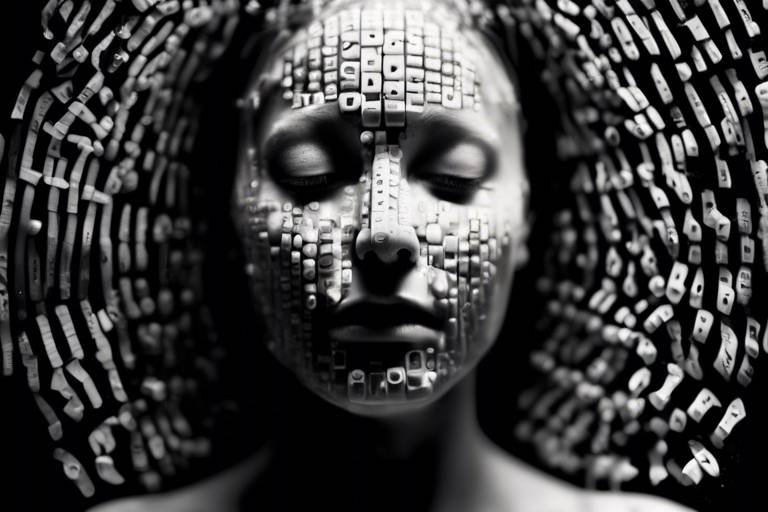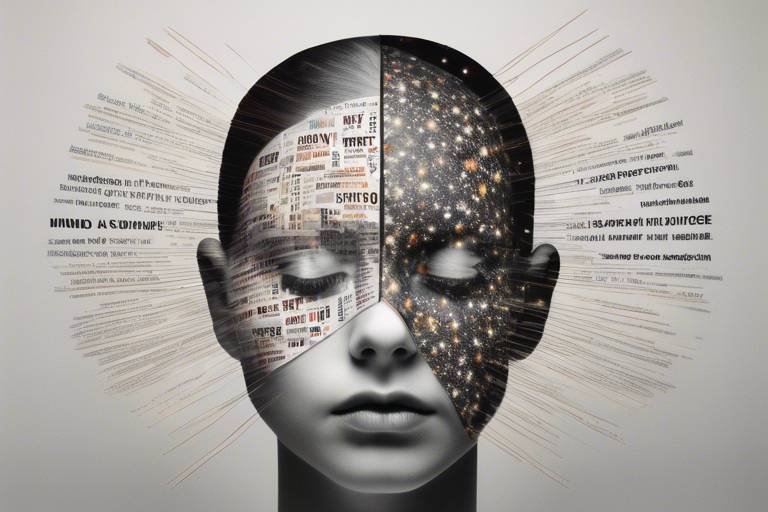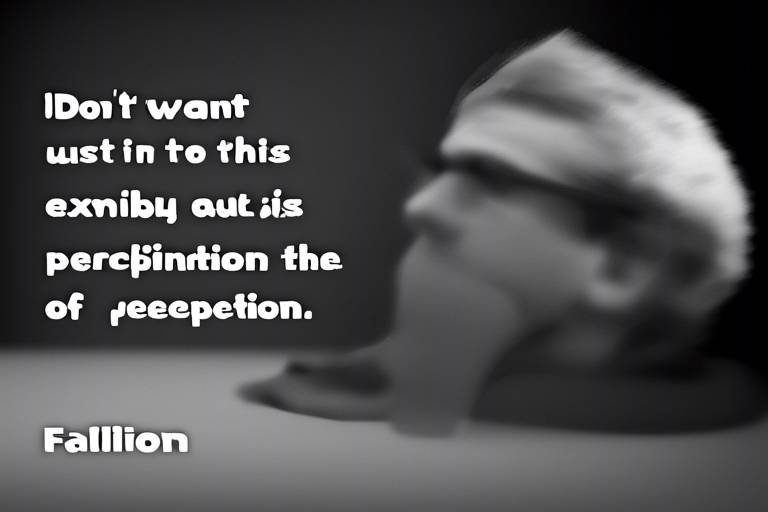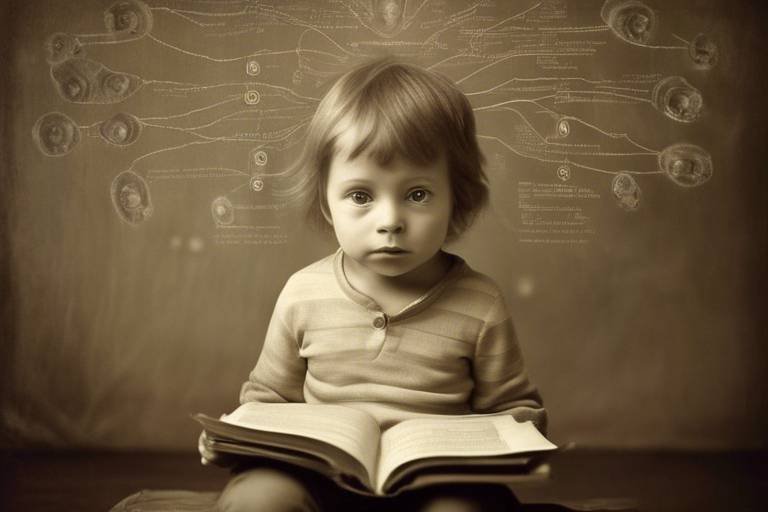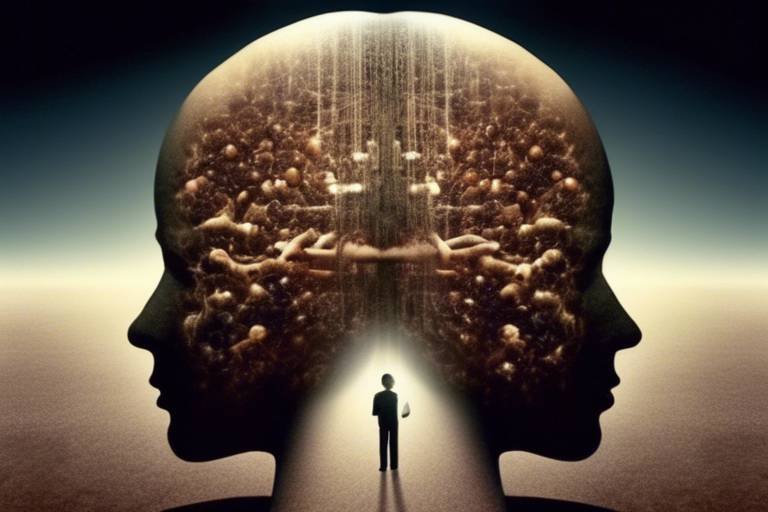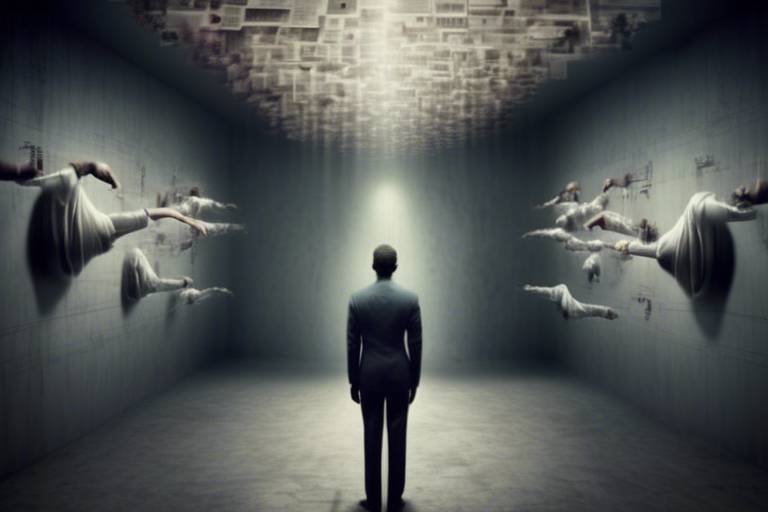A Review of Consciousness Theories
Consciousness is one of the most intriguing and elusive topics in both philosophy and science. It's that mysterious quality that allows us to experience life, to feel emotions, and to ponder our existence. But what exactly is consciousness? Is it merely a byproduct of brain activity, or does it transcend the physical realm? In this article, we will explore various theories of consciousness, examining their implications, strengths, and weaknesses. We delve into philosophical, scientific, and psychological perspectives to provide a comprehensive understanding of this complex topic.
Philosophical theories of consciousness address fundamental questions about the nature of awareness, perception, and the self. Thinkers like René Descartes and David Chalmers have posed questions that challenge our understanding of what it means to be conscious. Descartes famously stated, "I think, therefore I am," suggesting that the act of thinking is proof of one's existence. Meanwhile, Chalmers introduced the concept of the "hard problem" of consciousness, which distinguishes between the easy problems of brain function and the more profound question of why and how subjective experiences arise from neural processes. These perspectives force us to confront the complexities of consciousness and its relationship to reality.
Neuroscience investigates the biological underpinnings of consciousness, focusing on brain structures and functions. Through advanced imaging techniques and studies of patients with neurological disorders, scientists have started to unravel the intricate tapestry of consciousness. Key findings suggest that consciousness is not localized to a single area of the brain but rather emerges from the dynamic interactions of various regions. This section will highlight how these discoveries shape our understanding of conscious experience.
Different brain regions play crucial roles in consciousness. For instance, the thalamus acts as a relay station, processing sensory information before it reaches the cortex, where higher cognitive functions occur. The cortex itself, particularly the prefrontal cortex, is essential for decision-making and self-awareness. It's fascinating to consider how these structures work in concert to create the rich tapestry of our conscious experience. Without these intricate connections, our awareness would be fragmented and disjointed.
The concept of neural correlates of consciousness refers to specific brain activities associated with conscious experience. Researchers have identified certain patterns of neural firing that correspond to different states of awareness. For example, studies have shown that when we are fully alert and engaged, there's a distinct pattern of brain activity that differs from when we are in a dream state or under anesthesia. Understanding these neural correlates is crucial for deciphering the biological basis of consciousness and offers insights into disorders of consciousness, such as coma or vegetative states.
Studying patients with brain injuries provides invaluable insights into consciousness. Different types of brain damage can lead to varying degrees of awareness and cognitive abilities. For instance, someone with damage to the frontal lobe may struggle with decision-making and impulse control, while damage to the occipital lobe could impair visual perception. These cases illustrate the delicate balance of brain functions that contribute to our conscious experience. By examining how consciousness is affected by brain injuries, we can better understand the underlying mechanisms that govern awareness.
Psychological approaches focus on the subjective experience of consciousness. Theories such as the attention schema theory propose that consciousness arises from our brain's ability to model its own processes. This means that our awareness of our thoughts and feelings is not just a passive experience; instead, it's an active construction of our mental state. Moreover, cognitive processes like perception and attention play critical roles in shaping our conscious experience. For example, have you ever noticed how your attention can shift dramatically, altering what you perceive as reality? This fluidity of consciousness is a testament to its complexity.
Integrative theories seek to combine insights from philosophy, neuroscience, and psychology. They aim to provide a holistic understanding of consciousness that encompasses various perspectives. One such model is the Global Workspace Theory, which posits that consciousness arises from the integration of information across different cognitive processes. This theory suggests that when information becomes "globally available" in our minds, it enters our conscious awareness. However, it has faced criticism regarding its ability to fully explain the richness of conscious experience.
This theory posits that consciousness arises from the integration of information across different cognitive processes. According to this model, various pieces of information compete for access to the "global workspace" of consciousness, much like a stage where only a few performers can shine at any given time. This competition determines what we become consciously aware of. While this theory has garnered support, it also faces criticisms, particularly regarding its inability to account for the qualitative aspects of conscious experience.
Higher-order theories suggest that consciousness involves a higher-level awareness of mental states. In other words, for a thought to be conscious, we must not only have the thought itself but also be aware that we are having it. This perspective introduces a layer of complexity to our understanding of consciousness, sparking debates among philosophers and psychologists alike. Are we simply observers of our own thoughts, or is there more to the self-awareness process? These questions continue to challenge our understanding of consciousness.
- What is consciousness? Consciousness is the state of being aware of and able to think about one's own existence, thoughts, and surroundings.
- Why is consciousness considered a hard problem? The "hard problem" refers to the difficulty of explaining why and how we have subjective experiences, despite understanding the brain's functions.
- How do brain injuries affect consciousness? Different types of brain damage can lead to varying levels of awareness and cognitive abilities, illustrating the complexity of conscious experience.
- What is the Global Workspace Theory? It is a theory that suggests consciousness arises from the integration of information across different cognitive processes.

Philosophical Perspectives on Consciousness
When it comes to understanding consciousness, philosophical perspectives offer a rich tapestry of ideas that dive deep into the essence of awareness, perception, and the self. Think about it: what does it truly mean to be conscious? This question has puzzled great minds for centuries, leading to a variety of theories that attempt to unravel the mysteries of the human mind. Philosophers such as René Descartes, David Hume, and Immanuel Kant have all contributed significantly to this discourse, each bringing their unique lens to the table.
Descartes, often heralded as the father of modern philosophy, famously declared, "I think, therefore I am." This statement encapsulates his belief that the act of thinking is proof of one's existence and consciousness. For Descartes, consciousness is inextricably linked to the mind, suggesting that our awareness is a fundamental aspect of what it means to be human. He posited a dualistic view, separating the mind from the body, which has sparked countless debates on the relationship between mental and physical states.
On the other hand, David Hume took a more skeptical approach. He argued that our perceptions and experiences are merely collections of impressions, challenging the notion of a stable self. According to Hume, what we consider to be consciousness is just a fleeting series of thoughts and sensations, much like a stream of consciousness. This perspective raises intriguing questions: Is there a core self that experiences these thoughts, or are we simply a series of momentary experiences?
Then we have Immanuel Kant, who introduced a fascinating twist by suggesting that consciousness is shaped by our perceptions of the world. He argued that our understanding is constrained by the frameworks through which we interpret our experiences. This idea implies that consciousness is not just a passive reflection of reality but an active construction influenced by our cognitive faculties. Kant's work invites us to consider how our unique perspectives color our conscious experiences.
In addition to these historical figures, contemporary philosophers like Daniel Dennett and Thomas Nagel have furthered the discussion on consciousness. Dennett, for instance, proposes that consciousness is more of a narrative constructed by the brain rather than a singular entity. He emphasizes the importance of intentionality—the capacity of the mind to represent objects and states of affairs in the world. On the flip side, Nagel famously posed the question, "What is it like to be a bat?", highlighting the subjective nature of experience and the inherent limitations of our understanding of consciousness from an external viewpoint.
To summarize, philosophical perspectives on consciousness are as varied as they are profound. They challenge us to think critically about the nature of our awareness and existence. Here’s a quick look at some of the key philosophical theories:
| Philosopher | Theory | Key Idea |
|---|---|---|
| René Descartes | Dualism | Mental and physical states are distinct. |
| David Hume | Skepticism | Consciousness is a series of fleeting experiences. |
| Immanuel Kant | Constructivism | Consciousness is shaped by perception and cognition. |
| Daniel Dennett | Narrative Theory | Consciousness is a constructed narrative. |
| Thomas Nagel | Subjective Experience | Consciousness is inherently subjective. |
As we delve deeper into the realm of consciousness, it becomes clear that these philosophical insights play a crucial role in shaping our understanding. They not only illuminate the complexities of our awareness but also challenge us to explore the very nature of existence itself.

Neuroscientific Approaches to Consciousness
When we dive into the realm of consciousness, the neuroscientific approaches provide a fascinating lens through which to explore this enigmatic phenomenon. Neuroscience, at its core, seeks to unravel the complex biological mechanisms that underpin our conscious experience. By examining the intricate workings of the brain, researchers aim to shed light on how our thoughts, feelings, and perceptions arise from mere neural activity. Imagine trying to decode a symphony by listening to the individual notes; that's somewhat akin to what neuroscientists do when they study consciousness.
One of the most compelling aspects of neuroscience is its focus on brain structures and their functions. Different regions of the brain play pivotal roles in shaping our conscious awareness. For instance, the thalamus acts as a relay station, processing sensory information before it reaches the cortex—the region responsible for higher cognitive functions. This interaction between various brain areas creates a rich tapestry of conscious experience. It's like a well-orchestrated dance, where each dancer (brain region) has a specific role that contributes to the overall performance (consciousness).
Understanding the roles of specific brain structures is crucial for grasping how consciousness operates. The thalamus, often dubbed the "gateway to consciousness," filters incoming sensory data, determining what information is worthy of our attention. In contrast, the cerebral cortex, particularly the prefrontal cortex, is associated with complex thought processes, decision-making, and self-awareness. These structures work in concert to create a seamless flow of conscious experience.
The concept of neural correlates of consciousness (NCC) refers to the specific brain activities that correspond with conscious experiences. Researchers have identified various neural patterns associated with different states of awareness. For instance, studies using advanced imaging techniques like fMRI and EEG have revealed that certain brain waves and patterns are consistently linked to moments of heightened awareness or specific sensory experiences. This research is crucial because it not only helps us understand what consciousness is but also how it can be measured.
| Brain Activity | Conscious Experience |
|---|---|
| Gamma Waves | Heightened awareness and focus |
| Alpha Waves | Relaxed but alert state |
| Delta Waves | Deep sleep and unconsciousness |
Studying individuals with brain injuries provides profound insights into the nature of consciousness. When specific areas of the brain are damaged, it can lead to remarkable changes in awareness and cognitive abilities. For example, patients with damage to the frontal lobe may experience difficulties in decision-making and self-regulation, while those with parietal lobe injuries might struggle with spatial awareness. This exploration into the effects of brain damage not only enhances our understanding of consciousness but also raises intriguing questions about the self and identity. Are we merely the sum of our brain's parts, or is there something more?
In conclusion, neuroscientific approaches to consciousness offer a rich and complex view of how our brains create the tapestry of our conscious experience. By examining brain structures, identifying neural correlates, and studying the effects of brain damage, we inch closer to unraveling the mysteries of consciousness. However, as we continue this exploration, it's essential to remain open to the possibility that consciousness may be more than just a byproduct of brain activity—it could be a fundamental aspect of our existence.
- What is consciousness? Consciousness is the state of being aware of and able to think about one's own existence, thoughts, and surroundings.
- How do neuroscientists study consciousness? They use various techniques, including neuroimaging and studying brain injuries, to understand how brain activity correlates with conscious experiences.
- What are neural correlates of consciousness? These are specific brain activities that are associated with conscious experiences, helping researchers identify how awareness is generated in the brain.

The Role of Brain Structures
When we dive into the fascinating world of consciousness, we can't overlook the crucial role that various brain structures play in shaping our awareness and cognitive functions. Think of the brain as a complex orchestra, where each instrument contributes to the symphony of consciousness. In this grand performance, specific regions of the brain act as the conductor, guiding the flow of information and ensuring that everything works in harmony.
One of the key players in this orchestra is the thalamus. Often referred to as the brain's relay station, the thalamus processes sensory information and transmits it to the appropriate areas of the cortex. Imagine it as a traffic cop, directing incoming sensory signals to their respective destinations. Without a functioning thalamus, our ability to perceive the world around us would be severely compromised, leading to a disjointed experience of reality.
Another vital structure is the cerebral cortex, which is responsible for higher-order functions such as reasoning, problem-solving, and decision-making. The cortex can be thought of as the brain's executive suite, where all the important planning and strategizing takes place. Different regions of the cortex specialize in various tasks, from visual processing in the occipital lobe to language comprehension in the temporal lobe. This specialization allows for a rich tapestry of conscious experience, where each thread is woven together to create our perception of reality.
Moreover, the interplay between the thalamus and the cortex is essential for consciousness. When sensory information reaches the thalamus, it is not merely passed along; instead, the thalamus filters and prioritizes this information, determining what is most relevant for conscious awareness. This process can be likened to a spotlight illuminating a stage, highlighting certain aspects of our experience while leaving others in the shadows. Without this filtering mechanism, our minds would be overwhelmed with stimuli, making it nearly impossible to focus on what truly matters.
In addition to the thalamus and cortex, other brain structures contribute to our conscious experience. For instance, the hippocampus plays a pivotal role in memory formation, allowing us to recall past experiences and learn from them. The amygdala, on the other hand, is involved in processing emotions and can influence our conscious thoughts and decisions based on emotional responses. Together, these structures create a dynamic interplay that shapes not only our awareness but also our interactions with the world.
To further illustrate the importance of these brain structures, consider the following table that summarizes their roles:
| Brain Structure | Function |
|---|---|
| Thalamus | Relays sensory information to the cortex |
| Cerebral Cortex | Responsible for higher-order cognitive functions |
| Hippocampus | Involved in memory formation and recall |
| Amygdala | Processes emotions and influences decision-making |
In conclusion, the role of brain structures in consciousness is a complex yet captivating subject. Each structure contributes uniquely to our conscious experience, working together in a delicate balance. Understanding these roles not only enhances our comprehension of consciousness but also opens doors to exploring how brain injuries or dysfunctions can alter our perception and awareness. As we continue to unravel the mysteries of the mind, it becomes increasingly clear that the physical brain is not just a collection of cells but a vital component of who we are and how we experience the world around us.
- What is the thalamus's primary function? The thalamus acts as a relay station for sensory information, directing it to the appropriate areas of the cerebral cortex.
- How does the cerebral cortex contribute to consciousness? The cerebral cortex is responsible for higher-order cognitive functions such as reasoning, problem-solving, and decision-making.
- What role does the hippocampus play in consciousness? The hippocampus is crucial for memory formation, allowing us to recall past experiences and learn from them.
- Can brain damage affect consciousness? Yes, different types of brain damage can significantly impact awareness and cognitive abilities, altering how we perceive the world.

Neural Correlates of Consciousness
The concept of (NCC) is a fascinating and intricate area of study that seeks to identify the specific brain activities that correspond to conscious experience. Imagine trying to find the perfect key for a lock; in this case, the lock is consciousness, and the key is the unique pattern of neural activity that unlocks our awareness. Researchers have made significant strides in this field, utilizing advanced imaging techniques such as fMRI and EEG to observe the brain in action. These tools allow scientists to visualize which areas of the brain light up during different conscious experiences, providing a clearer picture of how consciousness is constructed from neural activity.
One of the most intriguing aspects of NCC is the variability of these neural patterns. For instance, when we are engaged in a task that requires deep focus, such as solving a complex problem, specific regions of the brain, including the prefrontal cortex, become highly active. Conversely, when we are daydreaming or in a relaxed state, different areas, such as the default mode network, come to the forefront. This variability suggests that consciousness is not a static state but rather a dynamic interplay of various neural processes.
To further illustrate this point, let's consider the following table that summarizes key brain regions commonly associated with conscious experience:
| Brain Region | Function |
|---|---|
| Thalamus | Acts as a relay station for sensory information |
| Cerebral Cortex | Involved in higher-order functions like perception, thought, and decision-making |
| Prefrontal Cortex | Plays a critical role in executive functions and self-awareness |
| Parietal Cortex | Integrates sensory information and helps in spatial awareness |
Moreover, the search for neural correlates of consciousness raises profound questions about the nature of self-awareness and subjective experience. How do these neural activities translate into the rich tapestry of thoughts, emotions, and perceptions we experience daily? This question is not just academic; it touches on the very essence of what it means to be human. Some researchers argue that the NCC are not merely correlates but are essential for the emergence of consciousness itself, suggesting that without specific neural activity, conscious experience cannot occur.
As we delve deeper into understanding NCC, we also encounter challenges and criticisms. For example, some scientists argue that correlating specific brain activities with consciousness oversimplifies the complexity of the mind. They suggest that consciousness might arise from the integration of multiple brain processes rather than being tied to a single neural correlate. This idea aligns with the Global Workspace Theory, which posits that consciousness emerges when information is shared across various cognitive processes.
In summary, the exploration of neural correlates of consciousness is a captivating journey into the depths of the human mind. It not only enhances our understanding of how we perceive the world but also invites us to ponder the intricate relationship between our brain's physical structure and the rich, subjective experiences that define our existence. As research continues to evolve, we may uncover even more about the neural underpinnings of consciousness, bridging the gap between biology and the profound nature of human experience.
- What are neural correlates of consciousness? They are specific patterns of brain activity that correspond to conscious experiences.
- How do researchers study NCC? By using imaging techniques like fMRI and EEG to observe brain activity during various conscious states.
- Are NCC the same for everyone? No, the neural correlates can vary among individuals based on numerous factors, including cognitive tasks and personal experiences.
- Can consciousness exist without specific neural activity? This is a debated topic; some argue that consciousness requires certain neural processes, while others believe it may be more complex.

Consciousness and Brain Damage
When we think about consciousness, it's fascinating to consider how fragile it can be. Brain damage provides a unique lens through which we can explore the complexities of awareness and cognitive function. Imagine your consciousness as a beautiful, intricate tapestry; any tear or fray can alter the entire piece. This is what happens when the brain suffers an injury—whether from trauma, stroke, or disease. The resulting changes can lead to profound alterations in a person's ability to perceive the world and themselves.
Research into patients with brain injuries has revealed a lot about the nature of consciousness. For instance, individuals with damage to the frontal lobe often exhibit changes in personality and decision-making abilities, which can drastically affect their self-awareness. On the other hand, those with damage to the occipital lobe may experience visual agnosia, where they can see objects but cannot recognize them. This demonstrates how different brain regions contribute distinctly to our conscious experience.
To illustrate this further, let's consider a few types of brain damage and their effects on consciousness:
| Type of Brain Damage | Effects on Consciousness |
|---|---|
| Traumatic Brain Injury (TBI) | Can lead to altered states of consciousness, ranging from confusion to coma. |
| Stroke | May result in aphasia, where individuals struggle to communicate, affecting their self-expression. |
| Neurodegenerative Diseases | Conditions like Alzheimer’s can erode personal identity and awareness over time. |
These examples highlight how specific brain functions are tied to our conscious experience. The loss of these functions can lead to a diminished sense of self and awareness. For instance, in cases of locked-in syndrome, patients are fully conscious but unable to move or communicate verbally due to complete paralysis of nearly all voluntary muscles. This condition raises profound questions about the relationship between consciousness and physical expression. Can one truly be said to be conscious if they cannot express it? It's a paradox that challenges our understanding of what it means to be aware.
Moreover, the study of consciousness and brain damage opens up discussions about recovery and rehabilitation. Some patients exhibit remarkable resilience and can regain aspects of their consciousness through therapy and neuroplasticity. This adaptability of the brain suggests that while damage can disrupt consciousness, it can also pave the way for new pathways and forms of awareness. This is akin to a river changing course after a landslide—though the original path may be blocked, new routes can emerge, leading to different landscapes of experience.
In summary, exploring consciousness through the lens of brain damage not only enhances our understanding of how awareness functions but also evokes deep philosophical inquiries into the essence of self and identity. As we continue to unravel these mysteries, we must grapple with the implications of our findings, both for science and for the individuals whose lives are forever changed by such injuries.
- What is consciousness? Consciousness is the state of being aware of and able to think about one's own existence, thoughts, and surroundings.
- How does brain damage affect consciousness? Brain damage can lead to various alterations in consciousness, including changes in awareness, personality, and cognitive functions.
- Can consciousness be restored after brain damage? In some cases, therapy and rehabilitation can help restore aspects of consciousness, but the extent of recovery varies widely among individuals.

Psychological Theories of Consciousness
When we dive into the realm of , we find ourselves exploring the intricate tapestry of human experience. These theories are like a map, guiding us through the winding roads of perception, attention, and cognitive processes. Have you ever wondered what it feels like to be aware? Or how your mind processes the world around you? These questions are at the heart of psychological theories, which aim to unravel the mysteries of our conscious experience.
One of the most influential theories in this domain is the Information Processing Theory. This approach likens the human mind to a computer, where information is received, processed, and stored. Just as a computer has various programs running simultaneously, our minds juggle multiple streams of information. This theory emphasizes the role of attention in determining what becomes part of our conscious experience. Think of attention as a spotlight; it illuminates certain aspects of our environment while leaving others in the shadows. Without this focus, our consciousness would be overwhelmed by the sheer volume of sensory input.
Another significant perspective is the Perceptual Awareness Theory. This theory posits that consciousness arises from our ability to perceive and interpret stimuli in our environment. It suggests that our conscious experience is not merely a passive reception of information but an active engagement with the world around us. For instance, when you hear a song, your mind doesn't just register the sound; it interprets the melody, remembers the lyrics, and evokes emotions associated with that tune. This theory highlights the dynamic nature of consciousness, illustrating that it is shaped by our interactions with our surroundings.
Moreover, we cannot overlook the role of cognitive processes in shaping our conscious experience. The Dual Process Theory introduces the idea that we have two systems of thinking: the fast, intuitive system and the slower, more deliberate one. This duality explains why we sometimes make snap judgments that feel instinctual, while at other times, we engage in deep, reflective thinking. Understanding this interplay between different cognitive processes helps us appreciate the complexity of consciousness. It's like having two gears in a bike; sometimes you shift to a higher gear for speed, while at other times, you need the lower gear for control and precision.
In addition to these theories, researchers have explored the concept of self-awareness. This idea suggests that part of what makes us conscious is our ability to reflect on our own thoughts and feelings. When you think about your own thinking, you're engaging in a higher-order cognitive process. This self-reflective aspect of consciousness is crucial for personal development and emotional intelligence. It allows us to learn from our experiences and adapt our behavior in response to our environment.
To summarize, psychological theories of consciousness offer a rich framework for understanding how we experience the world. They emphasize the importance of attention, perception, cognitive processes, and self-awareness in shaping our conscious experience. Each theory contributes a unique perspective, creating a more comprehensive picture of what it means to be conscious. As we continue to explore this fascinating field, we may uncover even more layers to the complex phenomenon of consciousness.
- What is consciousness? Consciousness refers to the state of being aware of and able to think about one's own existence, thoughts, and surroundings.
- How do psychological theories explain consciousness? Psychological theories explain consciousness by examining how perception, attention, and cognitive processes interact to shape our awareness and experiences.
- What role does attention play in consciousness? Attention acts as a filter, determining which information becomes part of our conscious experience while ignoring the rest.
- Can consciousness be measured? While consciousness is subjective and difficult to quantify, researchers use various methods, such as brain imaging and behavioral studies, to explore its characteristics.

Integrative Theories of Consciousness
The quest to understand consciousness has led to the development of integrative theories that aim to merge insights from various fields, including philosophy, neuroscience, and psychology. These theories recognize that consciousness is not a one-dimensional phenomenon; rather, it is a complex interplay of different cognitive processes and experiences. By synthesizing knowledge from diverse disciplines, integrative theories provide a more holistic understanding of consciousness, allowing us to appreciate its multifaceted nature.
One of the most significant contributions to this integrative approach is the Global Workspace Theory (GWT). Proposed by cognitive scientist Bernard Baars, GWT suggests that consciousness arises from the integration of information across multiple cognitive processes. Imagine a stage where various performers (representing different cognitive functions) present their acts to an audience (the conscious mind). Only the acts that capture the audience's attention are brought to the forefront of consciousness. This model not only explains how we become aware of certain stimuli while ignoring others but also highlights the dynamic nature of our conscious experience.
However, GWT is not without its critics. Some argue that it oversimplifies the complexities of consciousness by reducing it to mere information processing. Critics also point out that it does not adequately address the qualitative aspects of conscious experience, often referred to as the "hard problem" of consciousness. This term, coined by philosopher David Chalmers, emphasizes the difficulty of explaining why and how subjective experiences arise from neural processes.
Another integrative theory that has gained traction is the Higher-Order Theory (HOT). This theory posits that consciousness involves a higher-level awareness of our mental states. In simpler terms, we are not just aware of our thoughts and feelings; we also possess the ability to reflect on those thoughts and feelings. For instance, if you feel happy, a higher-order awareness allows you to recognize that you are feeling happy. This self-referential aspect of consciousness adds an additional layer of complexity to our understanding. However, HOT also faces challenges, particularly in explaining how this higher-order awareness emerges and its relationship with the first-order mental states.
Both GWT and HOT highlight the importance of integrating various perspectives to form a comprehensive understanding of consciousness. They encourage us to ask deeper questions about the nature of awareness and the mechanisms that underlie our conscious experiences. As we continue to explore these integrative theories, it becomes clear that the study of consciousness is an evolving field, rich with possibilities and challenges.
To further illustrate the differences and similarities between these theories, we can summarize them in the following table:
| Theory | Key Concept | Strengths | Weaknesses |
|---|---|---|---|
| Global Workspace Theory | Consciousness as a global stage for cognitive processes | Explains selective attention and information integration | May oversimplify the qualitative aspects of consciousness |
| Higher-Order Theory | Consciousness involves awareness of our own mental states | Accounts for self-reflective awareness | Challenges in explaining the emergence of higher-order awareness |
As we delve deeper into these integrative theories, it becomes evident that understanding consciousness is akin to piecing together a grand puzzle. Each theory offers a unique perspective, and together, they help illuminate the intricate tapestry of human experience. By embracing the complexities and contradictions inherent in the study of consciousness, we can aspire to unlock the mysteries of the mind.
- What is consciousness? Consciousness refers to the state of being aware of and able to think about one’s own existence, thoughts, and surroundings.
- Why are integrative theories important? They combine insights from various disciplines, providing a more comprehensive understanding of consciousness.
- What is the Global Workspace Theory? It posits that consciousness arises from the integration of information across different cognitive processes.
- What does the Higher-Order Theory suggest? It suggests that consciousness involves a higher-level awareness of our mental states.

The Global Workspace Theory
The Global Workspace Theory (GWT) is a fascinating framework that seeks to explain how consciousness arises from the myriad of cognitive processes happening in our brains. Imagine your brain as a large theater, where various performers (thoughts, perceptions, and memories) are vying for the spotlight. In this analogy, the stage represents our conscious awareness, while the backstage is filled with a multitude of unconscious processes—like the lighting and sound effects that enhance a performance but remain unseen by the audience.
According to GWT, consciousness is not a singular entity but rather a process that occurs when information is broadcasted to a global workspace, allowing it to be accessed by various cognitive functions. This theory suggests that when certain information reaches this workspace, it becomes available for decision-making, action, and further thought. This is akin to a director calling for a scene change, bringing a specific performance to the forefront while allowing others to fade into the background.
One of the key strengths of the Global Workspace Theory is its ability to integrate insights from multiple disciplines, including neuroscience, psychology, and philosophy. It posits that consciousness is a dynamic process rather than a static state, emphasizing the fluidity of our awareness. However, like any theory, it has its criticisms. Some argue that GWT fails to account for the qualitative aspects of consciousness—what it feels like to experience something. To illustrate this, consider the difference between knowing that you're dreaming and the vivid sensations you experience within that dream. The theory explains the mechanics but may overlook the richness of the conscious experience.
Research supporting GWT has utilized various methods, including neuroimaging techniques, to identify how specific brain regions activate when certain information becomes conscious. For example, studies have shown that the prefrontal cortex plays a critical role in this broadcasting process, linking it to higher cognitive functions such as planning and decision-making. This has led to a better understanding of how attention and awareness interact, suggesting that our conscious experience is heavily influenced by what we choose to focus on.
In summary, the Global Workspace Theory offers a compelling perspective on consciousness, framing it as an emergent property of complex cognitive interactions. It highlights the importance of information sharing across different brain regions and emphasizes the role of attention in shaping our conscious experience. As we continue to explore the depths of consciousness, GWT provides a valuable lens through which we can examine the intricate dance between awareness and cognitive processes.
- What is the Global Workspace Theory?
The Global Workspace Theory posits that consciousness arises when information is broadcasted to a global workspace in the brain, allowing for access and integration of various cognitive processes. - How does GWT relate to brain function?
GWT is supported by neuroimaging studies that show activation in specific brain areas, particularly the prefrontal cortex, when information becomes conscious. - What are the criticisms of GWT?
Some critics argue that GWT does not adequately explain the qualitative aspects of consciousness, such as the subjective experience of feelings and sensations. - How can GWT help us understand consciousness?
GWT provides a framework for understanding consciousness as a dynamic and integrative process, emphasizing the importance of attention and cognitive interaction.

Higher-Order Theories
When we dive into the realm of of consciousness, we enter a fascinating landscape where our understanding of awareness expands beyond mere sensory experiences. These theories propose that consciousness isn't just about having thoughts or perceptions; rather, it's about having a higher-level awareness of those thoughts and perceptions. Imagine standing on a balcony, looking out at a beautiful landscape. The view itself represents your immediate experiences, but your awareness of the view—that you're actually observing it—captures the essence of higher-order consciousness.
So, what exactly does this mean? Essentially, higher-order theories suggest that for a mental state to be conscious, we must have a higher-order thought about that mental state. For instance, if you're feeling happy, it's not enough to just experience that happiness; you also need to be aware that you're happy. This dual-layered approach creates a more intricate understanding of how we experience life.
One of the notable proponents of this theory, philosopher David Rosenthal, argues that consciousness arises from a mental state that is accompanied by another mental state that reflects on it. He posits that our conscious experiences are characterized by a meta-cognitive layer—a thought about a thought. This leads us to consider questions like: Are we truly aware of our feelings, or do we simply experience them without reflection? The implications of this theory are profound, as they challenge us to examine the depth of our awareness.
However, higher-order theories are not without their critics. Some argue that they complicate the understanding of consciousness unnecessarily. They question whether the additional layer of awareness is truly essential for consciousness, or if it simply adds complexity without providing clarity. Critics like philosopher Thomas Nagel suggest that consciousness might exist independently of such higher-order thoughts, emphasizing the subjective quality of experience itself.
To illustrate the debate, consider the following table that summarizes the strengths and weaknesses of higher-order theories:
| Strengths | Weaknesses |
|---|---|
| Provides a comprehensive framework for understanding self-awareness. | May overcomplicate the nature of consciousness. |
| Encourages deeper reflection on our mental states. | Critics argue it lacks empirical support. |
| Integrates insights from cognitive psychology. | Higher-order thoughts may not be necessary for consciousness. |
In conclusion, higher-order theories of consciousness invite us to reflect on the nature of our awareness and the layers that contribute to our conscious experience. They challenge us to think about not just what we experience, but how we understand those experiences. As we continue to explore the depths of consciousness, these theories serve as a reminder of the complexity and wonder inherent in the very fabric of our minds.
- What are higher-order theories of consciousness?
Higher-order theories suggest that consciousness arises from a higher-level awareness of one's own mental states. - Who are the main proponents of higher-order theories?
Philosopher David Rosenthal is a notable advocate of this theory, emphasizing the importance of meta-cognitive awareness. - What are the criticisms of higher-order theories?
Critics argue that these theories complicate our understanding of consciousness and may lack empirical support. - How do higher-order theories relate to self-awareness?
They provide a framework for understanding self-awareness by positing that being aware of one's thoughts is crucial for consciousness.
Frequently Asked Questions
- What is consciousness?
Consciousness is essentially our awareness of ourselves and the world around us. It's like the spotlight of our mind, illuminating our thoughts, feelings, and perceptions. Think of it as the stage where all our mental activities play out, allowing us to experience life vividly.
- How do philosophical theories contribute to our understanding of consciousness?
Philosophical theories dive deep into fundamental questions about awareness and perception. They challenge us to think critically about what it means to be conscious. By exploring the ideas of prominent thinkers, we gain insights into the nature of the self and the complexities of our subjective experiences.
- What role does neuroscience play in studying consciousness?
Neuroscience examines the biological foundations of consciousness, focusing on how brain structures and functions contribute to our conscious experience. It’s like being a detective, uncovering how different parts of the brain work together to create our awareness. Key findings in this field help us understand the intricate relationship between brain activity and conscious thought.
- What are neural correlates of consciousness?
Neural correlates of consciousness refer to specific brain activities that are associated with conscious experiences. Imagine each thought or perception lighting up certain areas of the brain, much like a city skyline at night. Research in this area aims to pinpoint these brain activities, revealing the connections between our minds and the physical workings of our brains.
- How does brain damage affect consciousness?
Studying individuals with brain injuries provides valuable insights into consciousness. Different types of damage can lead to varying effects on awareness and cognitive abilities. It's fascinating how the brain's architecture can influence our conscious experience, showing us just how fragile and complex our awareness can be.
- What are psychological theories of consciousness?
Psychological theories focus on the subjective experience of consciousness, exploring how we perceive and attend to the world around us. They delve into the mental processes that shape our awareness, much like an artist blending colors on a canvas to create a vivid picture of our experiences.
- What are integrative theories of consciousness?
Integrative theories aim to combine insights from philosophy, neuroscience, and psychology to offer a holistic view of consciousness. They seek to bridge the gaps between different perspectives, creating a comprehensive understanding of how consciousness works and its implications for our existence.
- What is the Global Workspace Theory?
The Global Workspace Theory suggests that consciousness arises from the integration of information across various cognitive processes. Picture it as a bustling marketplace where different ideas come together to create a vibrant tapestry of awareness, allowing us to process and respond to our environment effectively.
- What are Higher-Order Theories?
Higher-Order Theories propose that consciousness involves a higher-level awareness of our mental states. It’s like having an inner commentator that reflects on our thoughts and feelings, adding depth to our conscious experience. This perspective opens up debates about the nature of awareness and the layers of our mental life.


